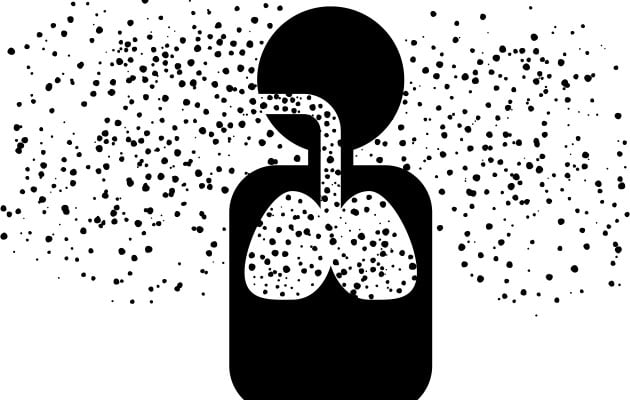Heating, ventilation and air conditioning workers keep us cool in the summer and warm in the winter, but doing so can put them at risk

In April 2012, a Thornhill, Ont., heating, ventilation and air conditioning (HVAC) company sent a supervisor and apprentice to repair an HVAC unit, located on the roof at the rear of a house. While the supervisor did other work, the apprentice was sent up to the roof to look at the unit. Shortly afterwards, the apprentice was found lying on the ground at the rear of the house. The worker suffered fatal injuries.
An investigation by the Ontario Ministry of Labour concluded the apprentice had fallen about 9 metres and was not wearing fall-arrest equipment.
Workers who install and service HVAC equipment face all the hazards common to construction work — from lifting heavy materials to dangerous chemicals; from confined spaces to working at heights. Many of these hazards can lead to serious injuries or be fatal. HVAC technicians must go through a thorough training program, one that focuses on knowing how to identify these varied hazards and how to work safely around them.
“It’s a manual labour type of job, so they’re working on job sites with all the hazards that go along with that,” says Glenn Walsh, chief instructor, refrigeration department, British Columbia Institute of Technology (BCIT) in Burnaby, B.C., adding these hazards exist for HVAC workers on all kinds of projects.
“It applies to someone working from a residential on up to commercial/industrial. The job sites will be different, but the hazards presented to the employee can be just as hazardous at a residential work site as at a commercial one.”
WIDE RANGE OF HAZARDS
The main hazards of HVAC work include: lifting, confined space entry (working inside ductwork), electrocution from electricity and wiring and using ladders and scaffolding. Workers are often required to work at height (on roofs, for instance) and have to manage fall-arrest systems. They deal with hot work as well as gases and chemicals, such as refrigerants, cleaning liquids, solvents, pressurized cylinders filled with chemicals and gases that can cause burns. They often work long hours and also drive between jobs, risking injury in a collision.
Other adverse health effects can be caused by the prolonged forward bending of the back, often required to install heating and air conditioning duct hangers and ductwork. Working in a stooped posture over a long period of time can result in low-back muscle strain, ligament sprain, a bulging or herniated disc or other back problems. HVAC technicians who work in older buildings may also be exposed to asbestos, which can cause mesothelioma, a rare but often fatal illness that can take a long time to develop and can be difficult to diagnose.
Some of the most common types of injuries that HVAC workers sustain are eye injuries and exposure to chemicals, Walsh says.
“In terms of physical safety, their eyes, ears, feet, back and lungs are all exposed to dangers.”
Ken Strohan, who has been in the HVAC industry for 15 years, says a dangerous situation can arise with the use of tools such as torches, especially in confined spaces.
“There must be at least two people on site when someone is in a confined space. And when a worker starts brazing, they are using up oxygen. If there are two or three people in a confined space, the oxygen levels can deplete quickly and you can become disoriented very quickly. That’s where confined spaces and working with combustibles become an issue.”
Another very common hazard for HVAC workers is working at height, he adds. For example, when workers are doing a furnace change-over, they often have to go onto the customer’s roof and change the chimney venting. Bad weather conditions, snow-covered roofs, for example, increase the risk of falling. As well, many roofs do not have tie-off points, which workers use for lanyards and harnesses. In Saskatchewan, for example, only newly constructed homes (those built after 1960) are required to have them.
A safe alternative is to use a crane or bucket and lift. However, that can cost anywhere from $250 to $500, and many customers won’t pay for that.
“Sometimes, I tell customers, ‘I have to get a lift here; I’m not sending my guys up there.’ You may have to walk away from a job if they’re not willing to pay for the workers to be safe and do it properly,” says Strohan, estimator and project co-ordinator at Saskatoon-based Razor Heating and Air Conditioning.
As well as causing strain injuries to the back, the constant need to lift and carry heavy items can also cause falls. HVAC technicians work with very heavy items, such as showers, sinks and toilets. The tool bag itself may weigh 40 to 50 pounds.
“It’s January 13 in Saskatchewan, it’s 2 degrees, your boots are full of snow, and you’re in a new construction zone. You walk in there with your tools in your hand and when you step onto the muddy steps, your heel comes out and down you go — 15 steps with 40 pounds of tools in your hand. So there’s a risk just in walking on a construction site that isn’t prepared correctly,” Strohan says.
While most of the day-to-day refrigerants workers deal with are classified by the manufacturers as safe in terms of toxicity and flammability, the chemical toxicity of some refrigerants does pose a hazard, says Lee Blakely, instructor and program head, refrigeration and air conditioning in the School of Construction at the Saskatchewan Polytechnic in Saskatoon. Moreover, heating these chemicals — which happens during a service procedure, such as brazing — increases their toxicity and makes them more hazardous to breathe.
“If we do have to have a service procedure, where we’re going to use a brazing process, we mitigate risk by isolating the refrigerant from what we’re going to do on the system or by removing the refrigerant. We would also incorporate adequate ventilation to the area,” he says.
“The situation might also require some PPE: something as simple as safety glasses or gloves. It might also include cartridge-type masks or, in an extreme case, self-contained breathing apparatus.”
TRAINING
Because HVAC workers face a wide range of hazards, they require a lot of technical expertise, says Ryan Quinn, occupational health and safety adviser at Construction Safety Nova Scotia in Dartmouth, N.S. Most important is that they know how to identify the hazards present on each particular job site.
“Their tasks are quite varied and their environments can change, depending on the company they work for. You might be doing some residential repairs or you may have a large insulation project at an industrial site. For that reason, hazard assessment skills would be at the forefront.”
Beyond knowing how to do the hazard assessment, Quinn says, workers should be trained in fall protection and fall-arrest equipment, confined spaces and lockout/tagout. Many HVAC instruction providers run a half-day course in lockout/tagout. Workers should also be trained in the safe handling and transport of chemicals.
In terms of certification, workers should have, or be working towards, their Red Seal or “journeyman” trade certification. This ensures they have both the necessary theoretical and hands-on training. The program may be called Ventilation and Air Conditioning mechanic (as in Nova Scotia) or HVAC Technician.
At BCIT, Walsh says, they spend two to three weeks on general safety alone; then, the safety procedures needed for specific kinds of work — for example, electrical safety and ladders — are discussed and practised by the students through the rest of the course. They are trained on WHMIS and on the basics of confined spaces.
“They have to work inside the ducts, inside refrigerated containers. They may have to go inside a cylinder somewhere.”
Students also learn about personal protective equipment (PPE). They should be wearing safety boots and, depending on the tasks, safety gloves. If hot work is required, they need to wear clothing that will not melt. And at all times, they should be wearing safety glasses. The failure to do so, Walsh says, is the main reason eye injuries are common among HVAC workers.
“They’re working with grinders, with chemicals that can squirt out of a cylinder. They can be working over their head, soldering and brazing or taking pieces of equipment apart over their heads. Anything falling into their eyes — something as simple as the dust on a piece of equipment or a fastener coming off — offers an opportunity to get hurt if they’re not taking the proper precautions,” he says. “We try to get into them that they need to wear the safety glasses on the job site at all times.”
Saskatchewan Polytechnic’s refrigeration and air-conditioning mechanic students not only receive basic skills and training, they also complete a three-day first-aid course, an 18-hour introductory course on the province’s OHS regulation, WHMIS legislation and PPE training, says Blakely.
Students should also understand the risks of fatigue. Many contractors work in excess of 60 hours per week, which can lead to exhaustion and cause workers to make mistakes. Students should be encouraged to keep a normal schedule once they begin working and understand they may need to turn down orders to prevent becoming over worked.
Generally, provincial OHS regulation does not address HVAC work specifically. To determine what regulations apply in any situation, employers of HVAC workers should look at the section dealing with the specific hazard involved, such as confined spaces if workers are required to work inside ductwork or fall protection if they are required to work on a roof.
Two years after the HVAC apprentice’s fatal fall, the employer, Thornhill, Ont.-based Design Air, pleaded guilty to failing to ensure a worker was protected by a fall-arrest system as required by law. The company was fined $70,000 and also ordered to pay a 25 per cent victim fine surcharge.
Linda Johnson is a freelance journalist based in Toronto. She can be reached at [email protected].
This article originally appeared in the December 2016/January 2017 issue of COS.





